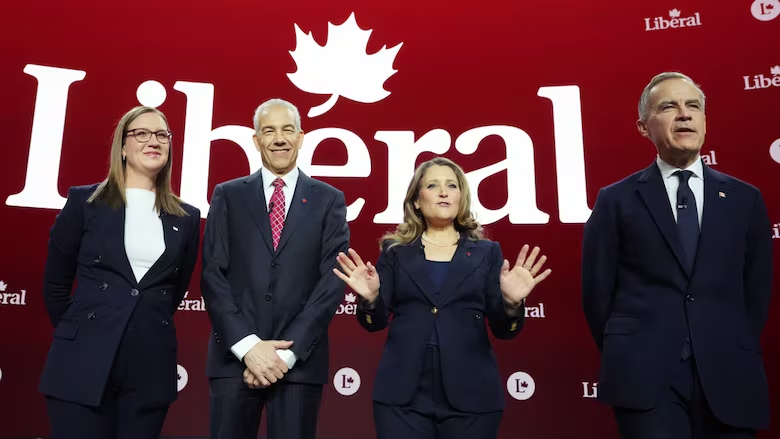Australia’s political scene has been shaken by the most recent liberal leadership election, with Sussan Ley making history as the first woman to lead the Liberal Party. This pivotal moment comes on the heels of a crushing electoral defeat, forcing the party to confront its identity, its future, and its connection to everyday Australians-especially women.
A Tumultuous Backdrop: The Liberal Party’s Crisis
The liberal leadership election did not arise in a vacuum. The May 2025 federal election delivered the worst result for the Coalition in its history. Labor surged to at least 93 seats in the House of Representatives, while the Liberals and Nationals were left with just 41. Peter Dutton, the outgoing leader, lost both his leadership and his own seat, a stunning symbol of the party’s disconnect with voters. The campaign was marked by mixed messaging, internal strife, and policies that failed to resonate with a changing electorate.
Liberal Leadership Election: Sussan Ley’s Historic Win
Sussan Ley’s victory in the liberal leadership election was a close but decisive one. She edged out Angus Taylor, a prominent conservative, by just four votes in a tense party room ballot. Ley, a moderate with a reputation for pragmatism and resilience, brings a unique perspective shaped by her diverse upbringing and decades in public life. Her election signals a desire for renewal and a more inclusive approach within the party.
Ley’s New Team
Ted O’Brien, a Queensland MP known for his work on climate and energy, was chosen as deputy leader. The leadership contest exposed deep divisions between moderates and conservatives, with some, like Senator Jacinta Nampijinpa Price, pushing for a more right-leaning direction. However, Ley’s win suggests a shift toward the center and a focus on unity.
Women at the Forefront: Addressing the Gender Gap
One of the most urgent issues highlighted by the election was the Liberal Party’s ongoing struggle to attract and retain women. With only about 30% female representation among its federal MPs, the party has lagged behind its rivals. Recent controversies, including resistance to flexible work policies and high-profile sexist remarks, have damaged its appeal to women voters.
Ley has made it clear that addressing this gender gap is a top priority. She has pledged to modernize the party’s culture, increase female representation in winnable seats, and ensure women’s voices are heard at all levels. Experts and party insiders agree that genuine change will require more than symbolic gestures-it will demand structural reform and a sustained commitment to diversity.
Gender Representation Snapshot
| Year | Female MPs | Target for Parity | Progress |
|---|---|---|---|
| 2022 | 29% | 50% by 2025 | Stalled |
| 2025 | ~30%* | 50% by 2025 | Unlikely |
*Estimate based on latest results
Liberal Leadership Election: Policy Challenges and Opportunities
With the liberal leadership election settled, the party’s focus now shifts to policy. Ley inherits a divided party, especially on issues like energy and the environment. As a former Environment Minister, she has championed nuclear energy as part of Australia’s zero-emissions future. This stance is intended to challenge Labor’s climate credentials, but it also risks alienating progressive voters.
Ley faces pressure to craft a credible climate policy that appeals to both the party’s base and the broader electorate. The previous Coalition stance was widely criticized as inadequate. Rebuilding trust will require a bold, modern approach that addresses the realities of climate change while supporting economic growth.
Ley’s Policy Priorities
Rebuild trust with women and younger voters
Develop a forward-looking, credible policy platform
Bridge the gap between moderates and conservatives
Re-engage grassroots supporters
Prepare for a strong opposition to Labor’s majority government
Election Fallout: Greens Lose Their Last Seat
The election was not only a blow to the Liberals. The Greens, led by Adam Bandt, lost their last remaining seat in Melbourne after a closely fought contest. Bandt attributed the loss to a “Trump effect,” with anti-Dutton sentiment driving voters toward Labor, even in traditionally progressive areas. The preferential voting system amplified this trend, leaving the Greens without representation in the House for the first time in years.
Despite this setback, the Greens achieved their highest-ever national vote share, reflecting the growing volatility and unpredictability of Australian politics. The result highlights the challenges facing all parties as they seek to adapt to a rapidly changing electorate.
Reactions and Reflections: The Path Forward
The liberal leadership election has set the stage for a period of deep reflection and renewal. Ley’s first statements as leader emphasized her commitment to reconnecting the party with the Australian public, especially women and those who felt left behind by previous leadership. The mood within the party is one of cautious optimism, tempered by the recognition that real change will require sustained effort.
Immediate Priorities for Ley’s Leadership
Rebuilding trust with women and younger voters
Crafting a modern, inclusive policy agenda
Healing internal divisions
Strengthening ties with the party’s grassroots
Positioning the Liberals as a credible alternative to Labor
Liberal Leadership Election: A Defining Moment
The liberal leadership election has ushered in a new era for the party, with Sussan Ley at the helm during a time of profound change. Her leadership will be tested by the need to modernize the party, unite its factions, and present a compelling vision for Australia’s future. The coming months will reveal whether the Liberals can truly transform themselves or whether old divisions will persist.
Ley’s historic win is more than a symbolic milestone-it is a call to action for a party in urgent need of renewal. The challenges are immense, but so are the opportunities. Australian politics is entering a new chapter, and all eyes will be on how the Liberals respond under Ley’s leadership.
